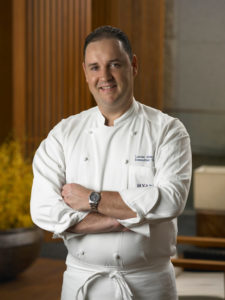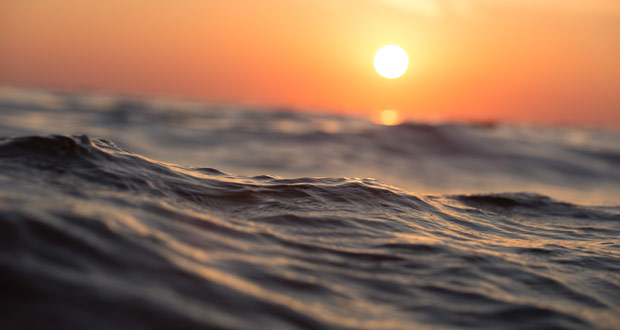While there are many seafood-eaters in the world, the ocean’s resources are limited, and people are eating more than it can produce. When hotels and restaurants procure seafood from farms and fisheries that are committed to following sustainable standards, they help ensure that fish will regenerate at a maintainable rate.
 In partnership with the World Wildlife Fund (WWF), Hyatt is supporting sustainable seafood across its portfolio by changing the way its restaurants purchase seafood. Starting with Chef Lucas Glanville at the Grand Hyatt Singapore, Hyatt’s seafood sustainability became part of its 2020 Environmental Sustainability Vision. In a recently released case study, Glanville cited six ways that hotels across the globe can participate in these efforts.
In partnership with the World Wildlife Fund (WWF), Hyatt is supporting sustainable seafood across its portfolio by changing the way its restaurants purchase seafood. Starting with Chef Lucas Glanville at the Grand Hyatt Singapore, Hyatt’s seafood sustainability became part of its 2020 Environmental Sustainability Vision. In a recently released case study, Glanville cited six ways that hotels across the globe can participate in these efforts.
Create a Culture of Awareness
Starting at the Grand Hyatt Singapore, Glanville wanted his culinary team as well as employees in all departments of the hotel to be knowledgeable on sustainable seafood. Experts on the topic visited the hotel and taught staff how to approach seafood efforts with sustainability in mind, which became a proposal the entire property was passionate about. From there, Hyatt corporate became engaged and brought the program to its entire portfolio.
Define Procurement Criteria
Hyatt committed to only procuring seafood from suppliers that maintain–or are transitioning to maintain–standards from the Marine Stewardship Council (MSC) and the Aquaculture Stewardship Council (ASC). Hotels located in areas where sustainable options are limited can consider WWF seafood guidelines and some organic farm certifications. At least 50 percent of Hyatt’s seafood volume will follow these rules by the end of 2018.
Evaluate Seafood Purchases
Many hotels, like the Grand Hyatt Singapore prior to these sustainability efforts, aren’t aware of how different seafood items affect menu development. Unsustainable purchases include buying the same product from various sellers or buying different cuts of the same fish separately. The Grand Hyatt Singapore found that this approach was unnecessary for the quality of the menu, and the hotel went from procuring over 600 seafood products to fewer than 100—a transition that took several years.
Work With Suppliers to Manage Overall Costs
Part of the Grand Hyatt Singapore’s success in their efforts is thanks to the hotel’s relationships with suppliers. Consolidating from 50 to 20 suppliers improved communication and costs. Suppliers can help find the right options for specific hotels, innovative menu options, and better manage how much money is spent on specific products.
Avoid Endangered Species
Endangered species must be avoided until a certified and sustainable source is made available. However, it’s sometimes difficult to identify what is and is not an endangered species globally due to misleading information, regional status, and incorrect assessments. To avoid this issue, Hyatt worked with the WWF to raise awareness and critically identify what is an endangered species.
Improve the Traceability of the Seafood Supply
Many seafood items are mislabeled, sourced illegally, and unregulated. Reducing risk is very important, but sometimes it can be difficult for the hotel to determine exactly where a product came from. Determining if a product is sustainable is very valuable, and being able to use regulations to trace seafood to its source is extremely important.
Supporting sustainable seafood efforts not only increases the time in which fish can reproduce; it also eliminates seafood waste and saves money. Creating responsibly-sourced menus helps improve the overall environment as well as a hotel’s operations.











